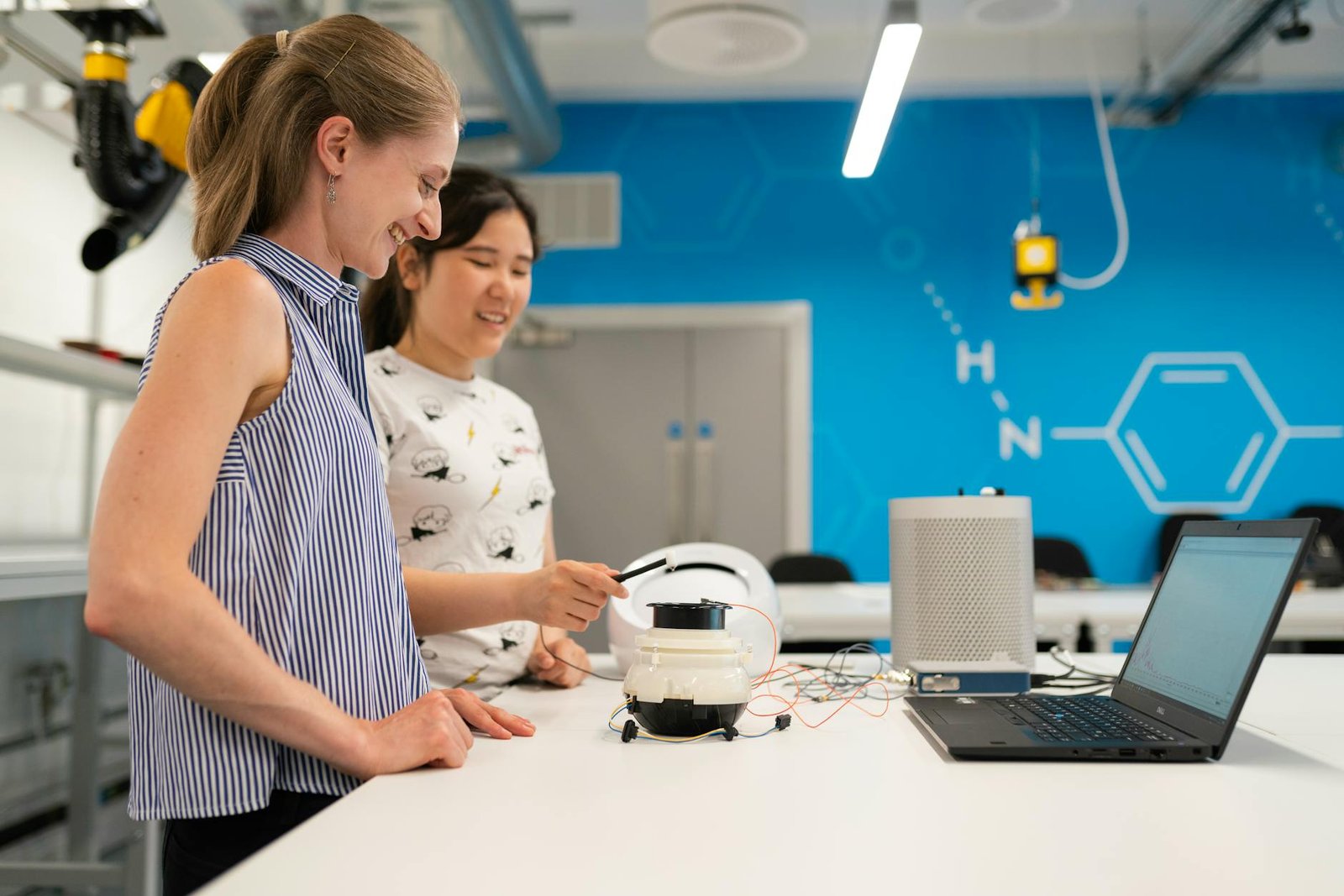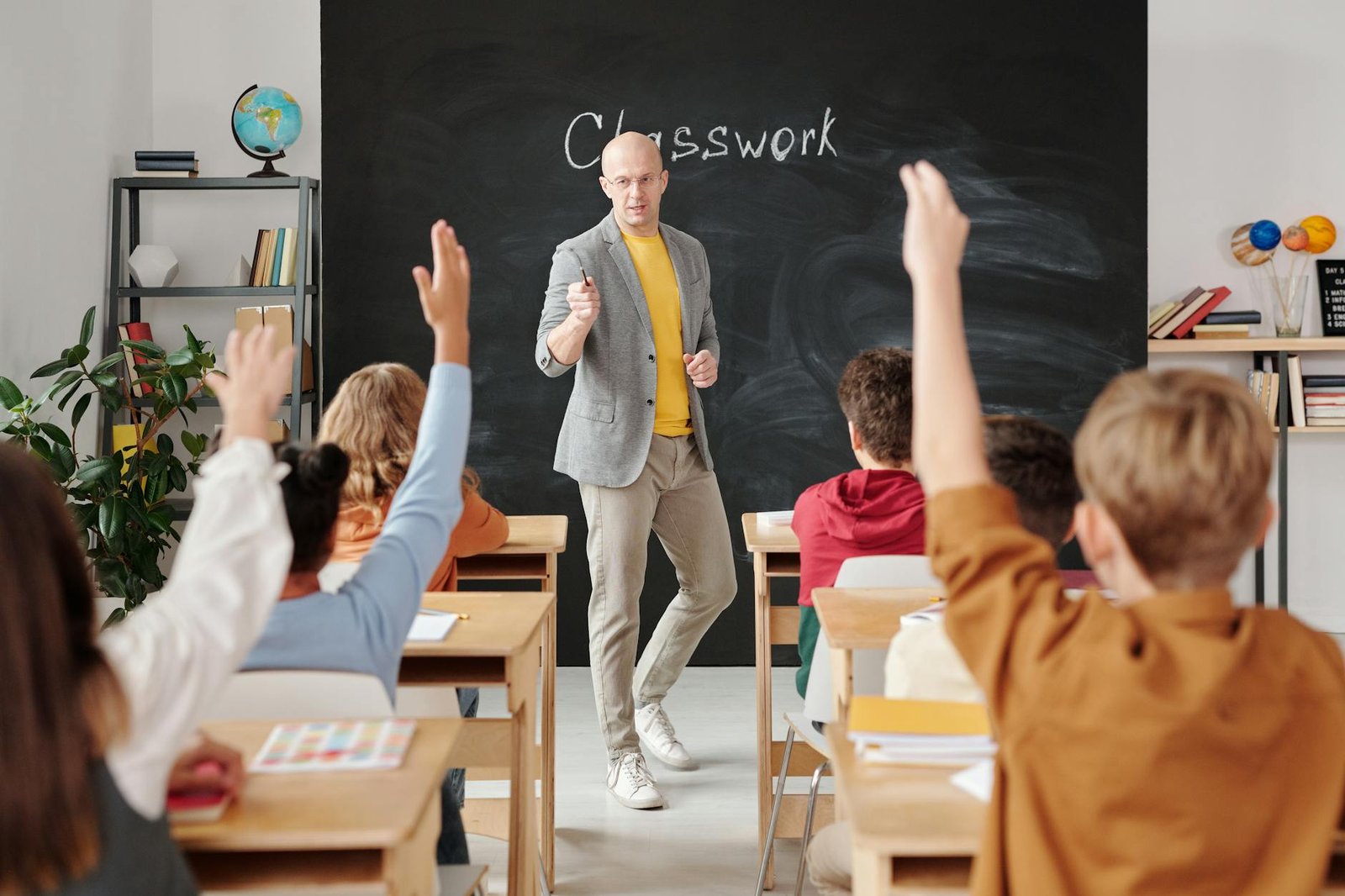Enhancing Critical Thinking and Problem-Solving Skills in Students: Innovative Teaching Methods for Success

Enhancing Critical Thinking and Problem-Solving Skills in Students Innovative Teaching Methods for Success

In today’s fast-paced, information-rich world, critical thinking and problem-solving skills have become more crucial than ever for students’ success. 🧠💡 Yet, many educational systems struggle to effectively cultivate these essential abilities. Are we truly preparing our students for the challenges of tomorrow?
Imagine a classroom where students don’t just memorize facts, but actively engage with complex ideas, confidently tackle real-world problems, and innovatively create solutions. This isn’t just a dream – it’s an achievable reality through innovative teaching methods. By embracing new approaches to education, we can transform how students learn, think, and solve problems, setting them up for lifelong success in an ever-changing world.
In this blog post, we’ll explore cutting-edge strategies to enhance critical thinking and problem-solving skills in students. From understanding the foundations of these crucial abilities to leveraging technology and fostering a growth mindset, we’ll dive deep into practical methods that educators can implement immediately. Get ready to revolutionize your teaching approach and empower your students with the skills they need to thrive in the 21st century and beyond!

Understanding Critical Thinking and Problem-Solving
Defining critical thinking in an educational context
Critical thinking in education refers to the ability to analyze, evaluate, and interpret information objectively. It involves questioning assumptions, examining evidence, and drawing logical conclusions. In the classroom, critical thinking empowers students to:
- Assess the validity of arguments
- Identify bias and logical fallacies
- Synthesize information from multiple sources
- Make informed decisions based on evidence
The relationship between critical thinking and problem-solving
Critical thinking and problem-solving are closely intertwined skills that complement each other. Here’s how they relate:
| Critical Thinking | Problem-Solving |
|---|---|
| Analyzes information | Identifies issues |
| Evaluates evidence | Generates solutions |
| Questions assumptions | Tests hypotheses |
| Draws conclusions | Implements solutions |
While critical thinking provides the analytical foundation, problem-solving applies this thinking to real-world challenges.
The importance of problem-solving skills for students
Developing strong problem-solving skills is crucial for students’ success in academics and beyond. These skills:
- Enhance academic performance across subjects
- Foster creativity and innovation
- Improve decision-making abilities
- Boost confidence and self-reliance
- Prepare students for real-world challenges
By mastering problem-solving techniques, students become better equipped to navigate complex situations, adapt to changing environments, and contribute meaningfully to their future workplaces and communities.
Now that we’ve established the foundation of critical thinking and problem-solving, let’s explore how current teaching methods address these crucial skills.

Assessing Current Teaching Methods
As we delve into the assessment of current teaching methods, it’s crucial to understand why innovation is necessary and where traditional approaches fall short in developing critical thinking and problem-solving skills.
The need for innovative teaching strategies
In today’s rapidly evolving world, the demand for innovative teaching strategies has never been more pressing. Traditional methods often fail to engage students fully or prepare them for real-world challenges. To illustrate this point, consider the following comparison:
| Traditional Methods | Innovative Strategies |
|---|---|
| Passive learning | Active participation |
| Memorization | Application of knowledge |
| Standardized tests | Project-based assessments |
| Teacher-centered | Student-centered |
Innovative strategies focus on developing adaptable, creative thinkers who can navigate complex problems effectively.
Limitations of conventional problem-solving instruction
Conventional problem-solving instruction often suffers from several limitations:
- Lack of real-world context
- Overemphasis on finding a single “correct” answer
- Insufficient focus on the problem-solving process
- Limited opportunities for collaborative learning
These limitations can result in students who struggle to apply their skills outside the classroom, highlighting the need for more dynamic and practical approaches.
Traditional approaches to teaching critical thinking
While traditional approaches to teaching critical thinking have their merits, they often fall short in several key areas:
- Overreliance on lecture-based instruction
- Limited opportunities for students to practice and refine their skills
- Insufficient focus on metacognition and self-reflection
- Lack of interdisciplinary connections
To address these shortcomings, educators must explore new methodologies that foster deeper engagement and more effective skill development. In the next section, we’ll explore innovative teaching methods specifically designed to enhance critical thinking abilities.

Innovative Teaching Methods for Critical Thinking
Now that we’ve assessed current teaching methods, let’s explore innovative approaches to enhance critical thinking skills in students.
A. Mind mapping and visual thinking strategies
Mind mapping is a powerful tool for organizing thoughts and visualizing complex ideas. By creating visual representations of concepts, students can:
- Identify connections between different ideas
- Improve memory retention
- Enhance creative problem-solving skills
| Benefits of Mind Mapping | Implementation Strategies |
|---|---|
| Improves comprehension | Use digital tools like MindMeister |
| Enhances memory recall | Encourage color-coding and symbols |
| Fosters creativity | Start with central topic and branch out |
B. Debate and argumentation exercises
Engaging students in structured debates helps develop:
- Logical reasoning skills
- Ability to analyze multiple perspectives
- Effective communication and persuasion techniques
To implement successful debate exercises:
- Choose controversial topics relevant to the subject matter
- Assign roles and encourage research
- Provide a rubric for evaluation
C. Case study analysis and real-world applications
Case studies bridge the gap between theory and practice, allowing students to:
- Apply critical thinking to real-world scenarios
- Develop problem-solving strategies
- Understand complex issues from multiple angles
Incorporate case studies by:
- Selecting relevant, current examples
- Encouraging group discussions
- Requiring written analysis and presentations
D. Socratic questioning techniques
The Socratic method promotes deep thinking through probing questions. Teachers can:
- Challenge assumptions
- Encourage evidence-based reasoning
- Foster independent thought
Key Socratic questions include:
- “What evidence supports your claim?”
- “How might someone argue against your position?”
- “What are the implications of this idea?”
By implementing these innovative teaching methods, educators can significantly enhance students’ critical thinking abilities. Next, we’ll explore how to boost problem-solving skills through active learning techniques.

Enhancing Problem-Solving Skills Through Active Learning
Now that we’ve explored innovative teaching methods for critical thinking, let’s dive into how we can enhance problem-solving skills through active learning. This approach engages students directly in the learning process, making it more effective and enjoyable.
Gamification and puzzle-solving challenges
Gamification transforms learning into an exciting adventure. Students become more motivated and engaged by incorporating game elements into problem-solving activities. Here’s a comparison of traditional vs. gamified problem-solving approaches:
| Traditional Approach | Gamified Approach |
|---|---|
| Textbook exercises | Interactive quests |
| Written assignments | Point-based challenges |
| Individual work | Team competitions |
| Static feedback | Real-time progress tracking |
Role-playing and scenario-based learning
Role-playing puts students in real-world situations, allowing them to practice problem-solving in context. This method:
- Improves decision-making skills
- Enhances empathy and perspective-taking
- Boosts confidence in handling complex situations
Collaborative problem-solving activities
Working together on complex problems helps students:
- Develop communication skills
- Learn to delegate and share responsibilities
- Gain exposure to diverse problem-solving approaches
Project-based learning initiatives
Project-based learning offers a comprehensive approach to problem-solving. Students work on long-term projects that:
- Reflect real-world challenges
- Require interdisciplinary knowledge
- Encourage creativity and innovation
By implementing these active learning strategies, educators can significantly enhance students’ problem-solving skills, preparing them for success in academic and professional settings. Next, we’ll explore how technology can further support the development of these crucial skills.

Leveraging Technology for Skill Development
In today’s digital age, technology offers powerful tools to enhance critical thinking and problem-solving skills in students. Let’s explore some innovative ways to leverage technology for skill development.
Digital collaboration tools for group problem-solving
Digital collaboration platforms enable students to work together on complex problems, fostering teamwork and diverse perspectives. Here are some popular tools and their benefits:
| Tool | Key Features | Benefits |
|---|---|---|
| Miro | Virtual whiteboard, real-time collaboration | Enhances visual thinking and brainstorming |
| Slack | Channels, file sharing, integrations | Improves communication and project management |
| Trello | Kanban boards, task assignments | Promotes organization and workflow management |
AI-powered adaptive learning tools
Artificial Intelligence is revolutionizing personalized learning experiences. AI-powered tools can:
- Analyze student performance
- Identify knowledge gaps
- Provide tailored content and exercises
This adaptive approach ensures that each student receives challenges appropriate to their skill level, promoting continuous growth in critical thinking and problem-solving abilities.
Virtual reality simulations for problem-solving
Virtual Reality (VR) offers immersive experiences that can simulate real-world problems in a controlled environment. Benefits of VR in education include:
- Safe experimentation with complex scenarios
- Immediate feedback on decision-making
- Enhanced engagement and motivation
- Development of practical problem-solving skills
Online platforms for critical thinking exercises
Numerous online platforms provide a wealth of resources for developing critical thinking skills. Some popular options include:
- Brilliant.org: Offers challenging problems in math and science
- Khan Academy: Provides free courses with interactive exercises
- Coursera: Offers critical thinking courses from top universities
These platforms allow students to practice critical thinking and problem-solving at their own pace, complementing traditional classroom instruction.
By integrating these technological tools into the curriculum, educators can create a dynamic learning environment that nurtures critical thinking and problem-solving skills effectively. Next, we’ll explore the importance of cultivating a growth mindset in students to further enhance their learning potential.

Cultivating a Growth Mindset in Students
Now that we’ve explored various teaching methods and technological tools, let’s focus on cultivating a growth mindset in students, which is crucial for developing critical thinking and problem-solving skills.
A. Fostering curiosity and questioning attitudes
Encouraging students to be curious and ask questions is essential for developing a growth mindset. Here are some strategies to foster this attitude:
- Create a “Question of the Day” board
- Implement a “Wonder Wall” in the classroom
- Use open-ended questions during discussions
- Reward students for asking thoughtful questions
B. Developing metacognitive awareness
Metacognition, or thinking about one’s own thinking, is a key component of a growth mindset. Here’s how to develop metacognitive awareness:
- Teach students to use self-reflection techniques
- Implement think-aloud protocols during problem-solving
- Encourage students to keep learning journals
- Use metacognitive prompts in assignments and assessments
| Metacognitive Prompt | Example Question |
|---|---|
| Planning | What strategies will I use to solve this problem? |
| Monitoring | Am I on the right track? Do I need to adjust my approach? |
| Evaluating | What worked well? What could I improve next time? |
C. Encouraging risk-taking and learning from failures
A growth mindset involves seeing failures as opportunities for learning and improvement. To encourage this perspective:
- Celebrate effort and progress, not just results
- Share personal stories of overcoming challenges
- Implement a “Failure Friday” where students discuss lessons learned from mistakes
- Use growth-oriented feedback that focuses on strategies and effort
By cultivating a growth mindset, students become more resilient, adaptable, and open to challenges. This mindset is crucial for developing strong critical thinking and problem-solving skills that will serve them well in their academic and professional lives. Next, we’ll explore how to measure and evaluate the progress of these skills in students.

Measuring and Evaluating Progress
Long-term tracking of skill development
To effectively measure the progress of critical thinking and problem-solving skills, it’s essential to implement long-term tracking methods. One effective approach is to use digital portfolios, which allow students to showcase their work over time. These portfolios can include:
- Problem-solving projects
- Critical analysis essays
- Reflective journal entries
- Collaborative work samples
By reviewing these portfolios periodically, educators can observe the growth in students’ skills and provide targeted feedback.
Self-reflection and peer assessment techniques
Incorporating self-reflection and peer assessment can significantly enhance the evaluation process. These techniques not only provide valuable insights but also help students develop metacognitive skills.
| Self-reflection techniques | Peer assessment methods |
|---|---|
| Journaling | Structured feedback forms |
| Self-evaluation rubrics | Group critiques |
| Goal-setting exercises | Collaborative projects |
| Video reflections | Peer review sessions |
Performance-based evaluations for problem-solving
Performance-based evaluations offer a practical way to assess problem-solving skills in action. These assessments can include:
- Real-world case studies
- Simulations and role-playing exercises
- Project-based learning assignments
- Hackathons or design challenges
These methods allow educators to observe how students apply their problem-solving skills in authentic contexts, providing a more comprehensive evaluation of their abilities.
Formative assessment strategies for critical thinking
Formative assessments are crucial for monitoring and guiding the development of critical thinking skills. Some effective strategies include:
- Socratic questioning techniques
- Concept mapping exercises
- Debate and discussion activities
- Analysis of complex texts or media
By integrating these formative assessment strategies throughout the learning process, educators can continuously gauge students’ progress and adjust their teaching methods accordingly.
As we move forward, it’s important to remember that measuring and evaluating progress in critical thinking and problem-solving skills is an ongoing process. The insights gained from these assessments can inform future teaching strategies and help cultivate a culture of continuous improvement in the classroom.

Critical thinking and problem-solving skills are essential for students’ success in today’s rapidly changing world. By implementing innovative teaching methods such as active learning, technology integration, and fostering a growth mindset, educators can significantly enhance these crucial abilities in their students. These approaches not only make learning more engaging but also prepare students for real-world challenges they will face in their academic and professional lives.
As we continue to evolve our educational practices, it’s crucial to regularly assess and adapt our teaching methods to meet the needs of modern learners. By focusing on developing critical thinking and problem-solving skills, we empower students to become independent thinkers, effective decision-makers, and valuable contributors to society. Let’s commit to creating learning environments that nurture these essential skills and set our students up for lifelong success.







Hi there just wanted to give you a quick heads up.
The text in your article seem to bee running off the screen in Chrome.
I’m not sure if this is a format issuhe or something
to do with browser compatibility but I thought I’d pist to
let youu know. The layout look great though! Hope yoou get the problem resolved soon. Thanks https://Ternopil.pp.ua/
Thanks for your feedback.
We’re working on this
Hi there jjst wanted to give you a quick heads up.
The text in your article seem to be running off the screen inn Chrome.
I’m not sure if this is a format issue or something to do with browser compatibility but I thought I’d post to
let you know. The layout look great though! Hope you get the proble resolved
soon. Thanks https://Ternopil.pp.ua/